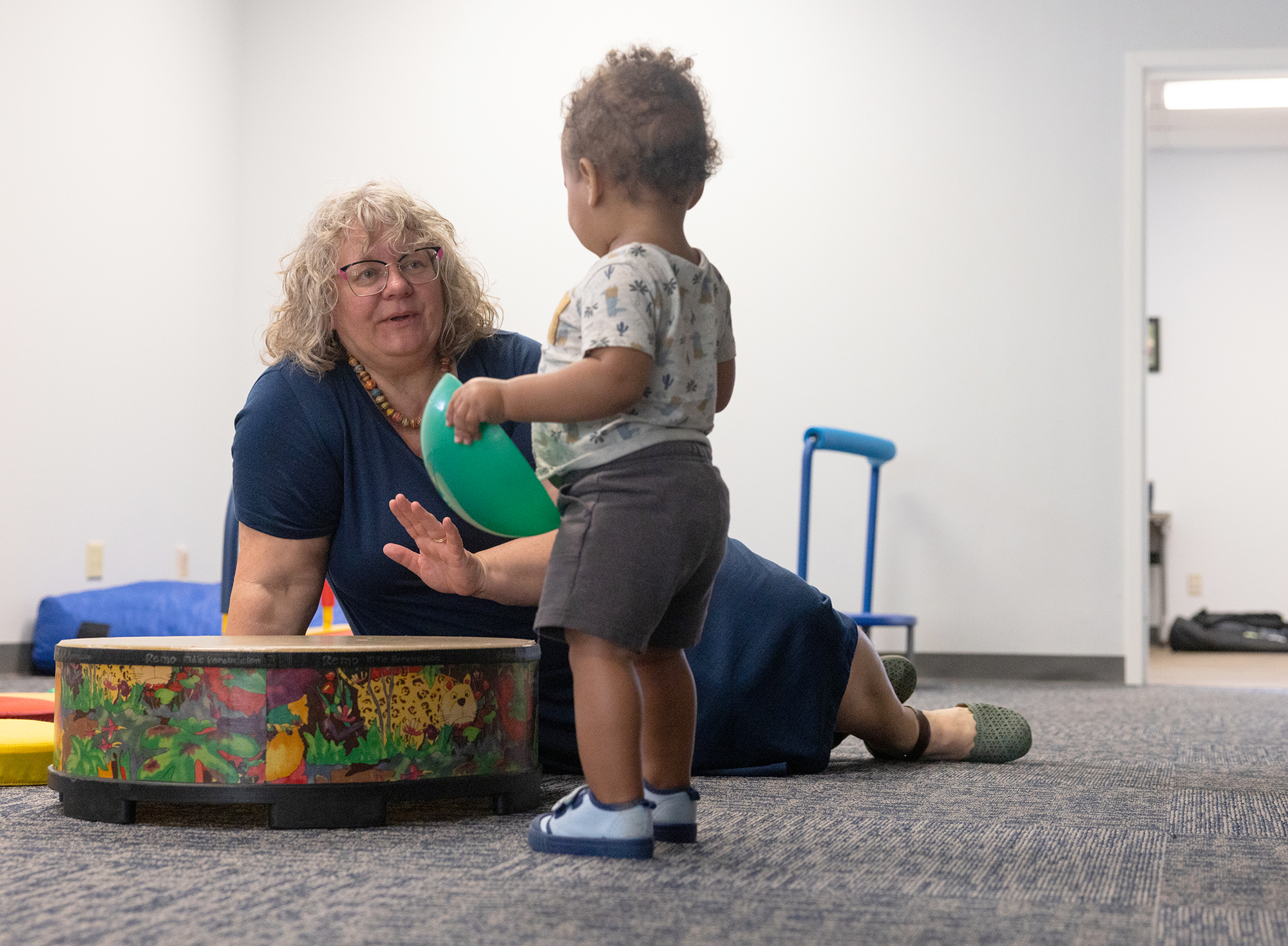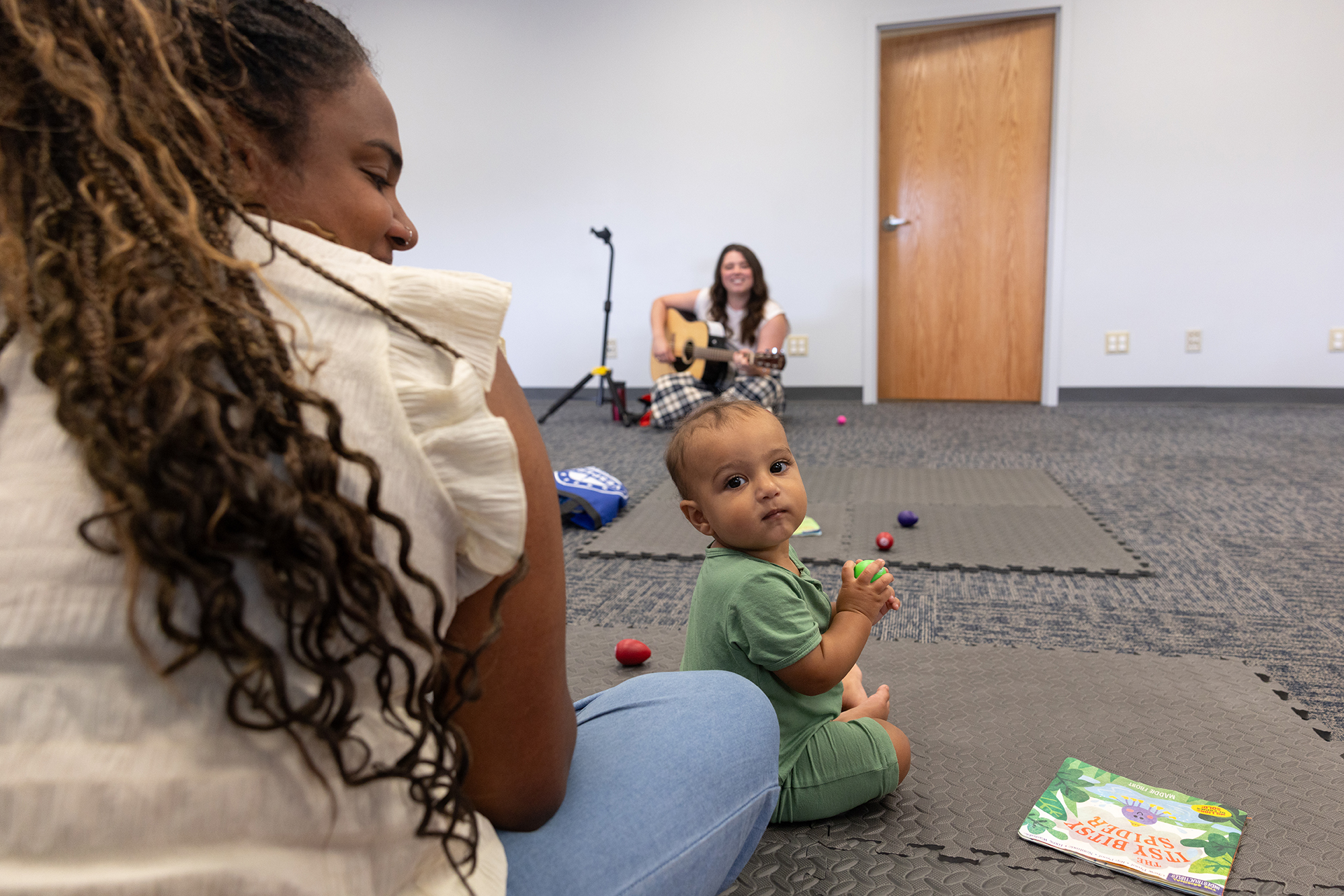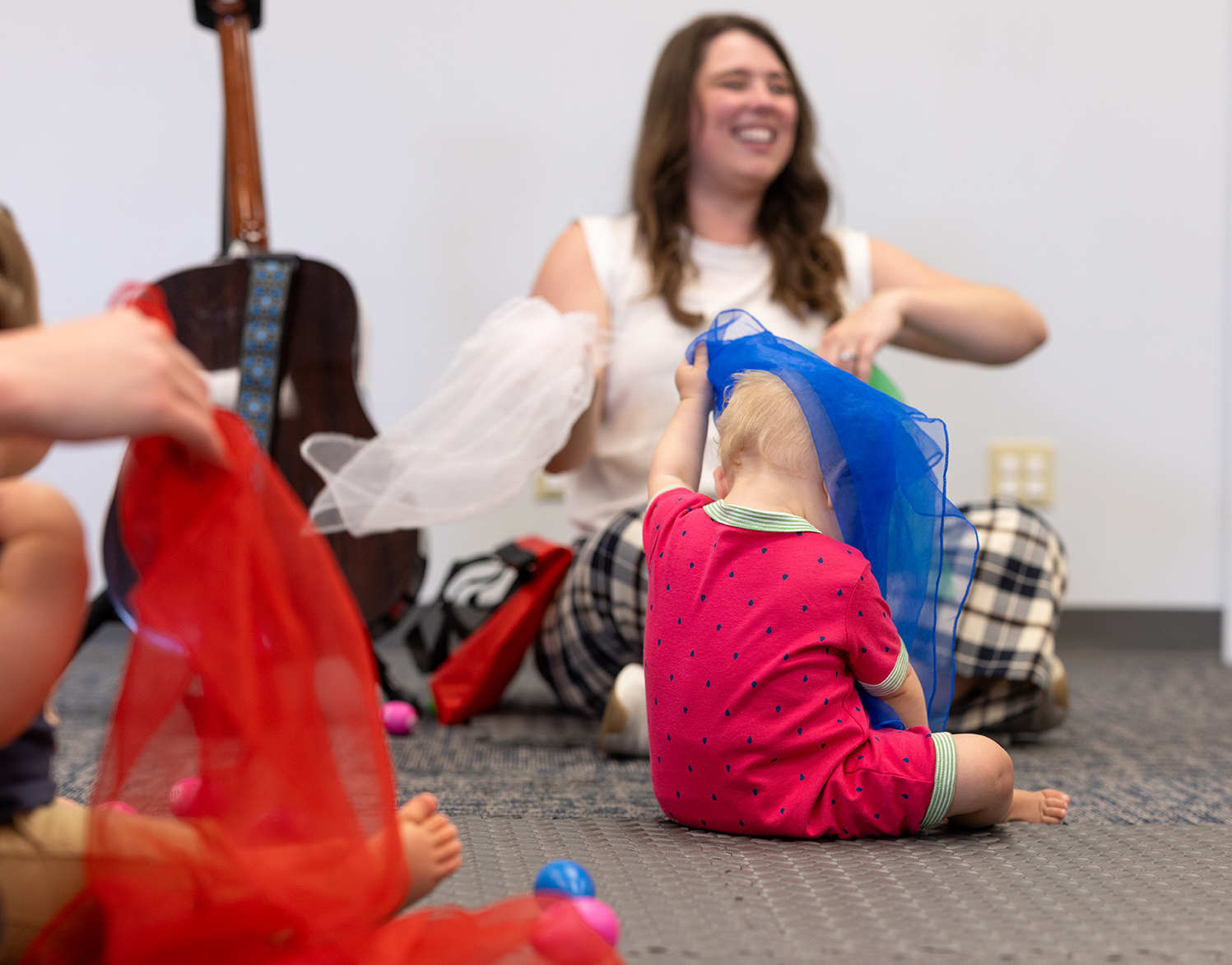KU researcher advocates scientific framework to unlock music therapy’s full potential

LAWRENCE — There is power in music: A song can make you feel sad. A leisurely paced instrumental piano tune can make you feel relaxed. An intense beat can make you get up and dance. Music has also been used to promote healing, improve memory and alleviate pain.
There is a perception, however, that the effects of music are inexact and difficult to dissect. KU Life Span Institute researcher Deanna Hanson-Abromeit disagrees.
“A big driver in my research is I'm really tired of being told that music therapy is a soft science,” said Hanson-Abromeit, professor of music therapy and music education at the University of Kansas.

Hanson-Abromeit recently called for greater use of the framework she established, the Therapeutic Function of Music Plan, or TFM, to improve the rigor of music-based interventions development, implementation and research. Writing in the May 2025 edition of Frontiers in Psychology, she described how the TFM can specify what the music contributes to the intended outcomes and should be applied to developing music-based interventions defined in the National Institutes of Health MBI toolkit.
The TFM matrix she published in 2015 describes how the musical element of rhythm can, for example, support the use of gestures. Studies have also shown variation in rhythm can increase neural tracking, which describes how the brain responds to sound such as speech. The different music elements that seem essential to create a change then inform music compositions.

One of her federally funded research projects now underway uses music therapy to encourage language development in infants and toddlers and may further inform how music can strategically affect outcomes.
As a clinician, an experience in a neonatal intensive care unit helped push Hanson-Abromeit toward her research. There, she first realized how subtle changes in tempo, rhythm or pitch would impact respiratory rate in premature infants in the nursery.
“I could sing at the bedside and capture their attention in a way that wasn't happening in other stimuli,” she said.
“When we break apart the elements of music and use the research to determine how that element functions for targeted change, we can then put them all together and identify the different music elements that seem essential to create the change we're looking for. The TFM then informs the music compositions we create or use in the intervention,” she said.

Other implications for music therapy that Hanson-Abromeit is exploring include using singing to improve lung function for individuals with chronic obstructive pulmonary disease and treating withdrawal symptoms for newborns exposed to opioids by encouraging dopamine reactions through music.

While few music therapists tend to go into doctorate-level training, Hanson-Abromeit said a research-backed approach to music therapy is critical to understanding how to best develop therapeutic music interventions. She wants both researchers and clinicians to know there’s more hard science behind how music affects us than people may realize.
“We're developing a theory of the music for intervention, and then we can check the theoretical fidelity — is the music that we're using in this intervention actually designed to function for the change we say it is, versus singing any old song that someone might like,” Hanson-Abromeit said.